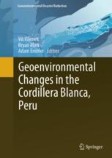Search
Search Results
-
Introduction
The deepwater area is rich in oil and gas resources (Weimer et al. 2006; Zhang et al. 2007; Wu et al. 2009; Wu et al. 2018). However, deepwater oil...
-
Gas Hydrate Disasters
Marine gas hydrate hazards pose a significant threat to submarine pipelines, drilling platforms, and the near-shore environment. These hazards are...
-
Shallow Water Flow
Shallow water flow (SWF) is a drilling disaster caused by overpressure driven upward flow of coarse sediments.
-
Functional Design of Mitigation Measures: From Design Event Definition to Targeted Process Modifications
Structural and non-structural measures might be implemented to protect elements at risk against debris-flow hazards. However, despite centuries of...
-
Statistical Techniques for Debris-Flow Frequency–Magnitude Analyses
Debris flows are a curse where they interfere with the built environment because of their poor predictability, their long runout and high impact...
-
Post-Wildfire Debris Flows
Post-wildfire debris flows pose severe hazards to communities and infrastructure near and within recently burned mountainous terrain. Intense heat of...
-
Advances in Design of Barriers for Debris Flow Impact
Debris flows, which often contain large boulders, may impact and destroy downstream facilities such as buildings and bridges. To protect human lives...
-
Causes and Triggers
Debris flows are caused by rapid mobilization of loose debris and sediment by water in steep mountain environments. They occur in a wide range of...
-
Debris-Flow Watersheds and Fans: Morphology, Sedimentology and Dynamics
Debris flows typically originate in mountainous watersheds. At the base of these watersheds and where not truncated by a higher order stream or...
-
Numerical Modeling of Debris Flows: A Conceptual Assessment
Real-world hazard evaluation poses many challenges for the development and application of numerical models of debris flows. In this chapter we...
-
Sendai Framework Voluntary Commitments: Monitoring Landslide Stakeholders’ Contributions
Disasters caused by landslides have continued to occur in recent years resulting in loss of lives and livelihoods around the world. To prevent such...
-
Mud-Mark-Based Estimations of Mass-Wasting Processes Caused by the 2008 Iwate-Miyagi Nairiku Earthquake, Japan
A 7.2 Magnitude (Moment Magnitude Mw: 6.8) earthquake occurred in the south inland of Iwate prefecture at 8:43 JST on June 14, 2008. Its epicenter...
-
Emerging Seismicity Trends Linked to Catastrophic Landslides Behavior in Sri Lanka
Sri Lanka was historically not known to be situated in a seismic hotspot. However, in 2022, the island nation experienced seven earthquakes, and in...
-
Landslide Prediction Model Based Upon Intelligent Processing of Multi-Point Monitoring Information: A Review
The construction of landslide displacement prediction model is crucial and effective in landslide prevention and mitigation. Intelligent processing...
-
Spatio-Temporal Distribution of Rainfall-Induced Landslides in Nicaragua (2000–2022): Preliminary Insights to Communicate Landslide Disaster Risk
Nicaragua’s location in the tropics makes it highly susceptible to tropical cyclones, with 22 such events causing significant damage between 1971 and...
-
Assessing the Potential Rapid and Long Travelling Landslides in Sri Lanka: A Case Study of Athwelthota Landslide
Landslides are a significant natural hazard in Sri Lanka, causing colossal damage to infrastructure, property, and loss of life. The country is...
-
Global Promotion of Understanding and Reducing Landslide Disaster Risk: Two Years on P-LRT
This article presents an overview and a concise review of a global promotion of understanding and reducing landslide disaster risk, based on 2 years...
-
Experimental Study on Residual Shear Strength of Soil Using Undrained Ring Shear Apparatus
In general, studies of residual shear strength are minimal for soils on landslide-prone slopes in Sri Lanka. This study focuses on determining the...
-
An Integration of the Fractal Method and the Statistical Index Method for Map** Landslide Susceptibility
Appropriate land use planning and the sustainable development of residential communities play a crucial role in the development of mountainous...
-
How People Feel Endangered by Natural Hazards: Interpretation of Questionnaires in the Callejón de Huaylas
The objective of this study was to find out the opinion of a selected population at risk in the Cordillera Blanca. We distributed questionnaires...
